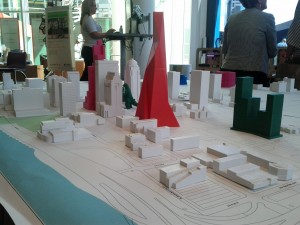It’s probably nothing new to all who experienced it, but 2012 was a very hot year for most of the US. The graphic above from the New York Times (Accuweather and NOAA sources), shows how much of the US was affected. For whatever reason, the Louisville portion of the Ohio River Valley was not as affected as greatly.
Going back to my earlier post, it’s interesting to note that the author Dr. Nir Krakauer noted that the winters are warming faster than the summers. So what does this mean? Well, it could mean that the plants in our area could be more hardy because the winters have been trending to be more mild. It could mean that natives could be more marginalized and that invasives, which may already be suited for a longer growing season, could become even more aggressive.
Does this mean I’m designing for orange and banana trees? No, but I’m less fearful for plants that are borderline hardy for our area. It also means I’ll be watching the native plants more closely to see how they will do with our warmer weather.














